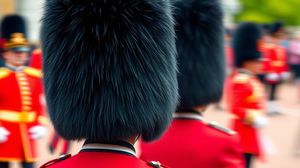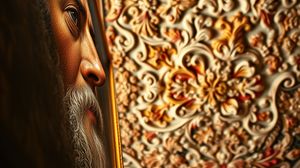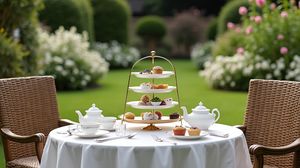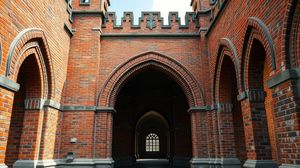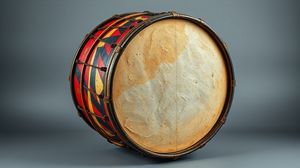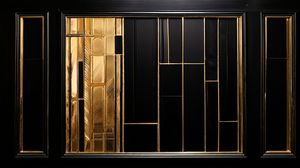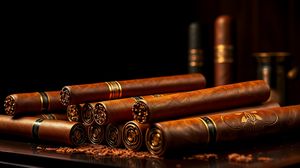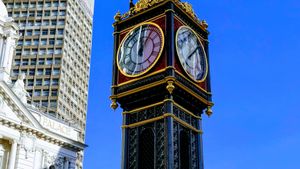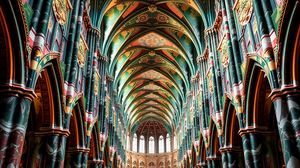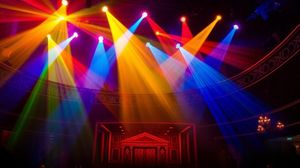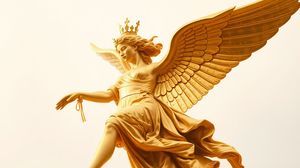
Unveiled in 1911, the Queen Victoria Memorial stands as a magnificent monument dedicated to Britain's longest-reigning monarch at the time, Queen Victoria, who reigned from 1837 to 1901. It was designed by the celebrated sculptor Sir Thomas Brock, known for his exceptional craftsmanship. The memorial is positioned strategically in front of Buckingham Palace, making it a focal point for tourists and a backdrop for numerous ceremonial occasions.
The design of the memorial is rich in symbolism, featuring a central statue of Queen Victoria seated in a regal pose. Around her, allegorical statues represent concepts such as Truth, Justice, and Motherhood. Atop the structure stands the golden Winged Victory, symbolizing triumph and glory, catching the sunlight and often seen glistening from afar.
One of the most intriguing aspects of the memorial is its incorporation of maritime themes, a nod to the British Empire's naval prowess during Victoria's reign. Statues representing naval strength, enhanced by cherubs and mermaids, adorn the lower tiers of the monument, demonstrating the detailed storytelling inherent in Brock's design.
A lesser-known fact about the Queen Victoria Memorial is that it's not just a single monument but a public space comprising surrounding gardens and a roundabout that facilitates key royal parades. It has become a preferred gathering spot for tourists who enjoy its grand ambiance and view of Buckingham Palace.
The memorial faced some controversy when it was first proposed. Some critics argued against the extravagance in the midst of economic difficulties at the turn of the century. Nonetheless, it was completed with the support of public donations, exhibiting the enduring public admiration for Queen Victoria.
The Queen Victoria Memorial remains a testament to the artistic and architectural ambitions of the early 20th century. It continues to function as a centerpiece of British heritage, attracting history enthusiasts and casual visitors alike who are keen to understand the legacy of Queen Victoria and her era.

Making the Most of Your Visit:
Check out the lighting—visiting the Queen Victoria Memorial early in the morning or late afternoon is ideal, as the golden Winged Victory glows beautifully with the changing sunlight angles. This makes for some fantastic photo opportunities with Buckingham Palace in the background.
Enjoy some people-watching—it's a lively spot, especially during the Changing of the Guard, when many gather around the memorial. It's one of those places where you can soak up the true hustle and bustle of London life.
Take a closer look at the sculptures—most people stop for a photo and move on, but if you take the time to examine the sculptures up close, you'll notice intricate details and maritime symbols like cherubs and mermaids that represent the power and reach of the British Empire during Victoria's reign.
Explore the surrounding gardens—the space around the monument is beautifully landscaped and offers a serene spot to relax, with a view of Buckingham Palace on one side and the expansive St. James's Park on the other. It's a great place for a breather and maybe a quick picnic.
Note the historical context—understanding the public sentiment at the time of its construction can add depth to your visit. Remembering how it was funded by public donations despite some controversy can offer insight into the era's priorities and public opinion.

Visiting Times & Costs:
The Queen Victoria Memorial, located in front of Buckingham Palace, is always open to the public and can be visited at any time of the year. As it is an outdoor public monument, there is no entrance fee, making it a free attraction for all visitors.
Accessibility: The monument itself is situated in a public space that is accessible to people with disabilities. However, visitors should be aware that due to its central location at the junction of several major roads, reaching it may involve crossing busy streets. Care should be taken when moving through areas that do not have dedicated pedestrian crossings.
Visitors can enjoy the panoramic views and sculpture without any time restrictions, enhancing the experience with the natural lighting conditions described in the tips section of your guide.

Address & Map:

Nearby:
